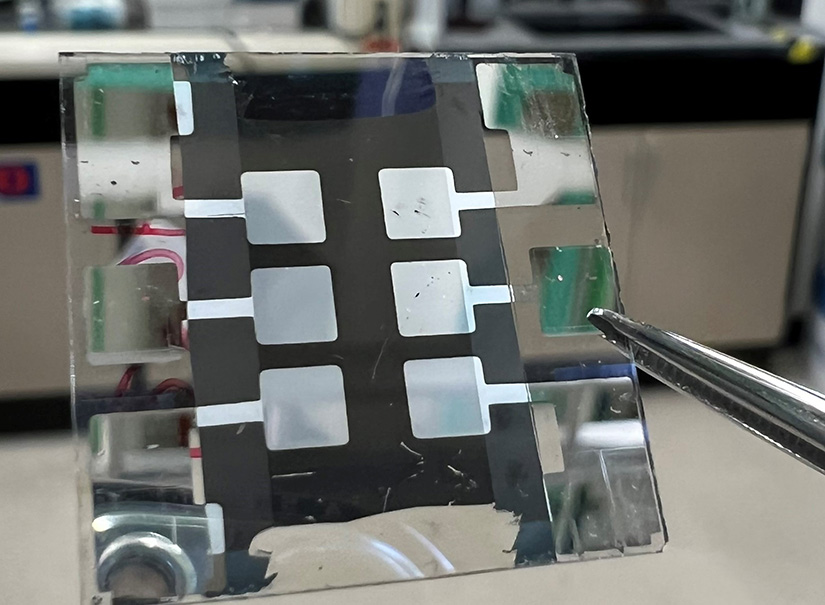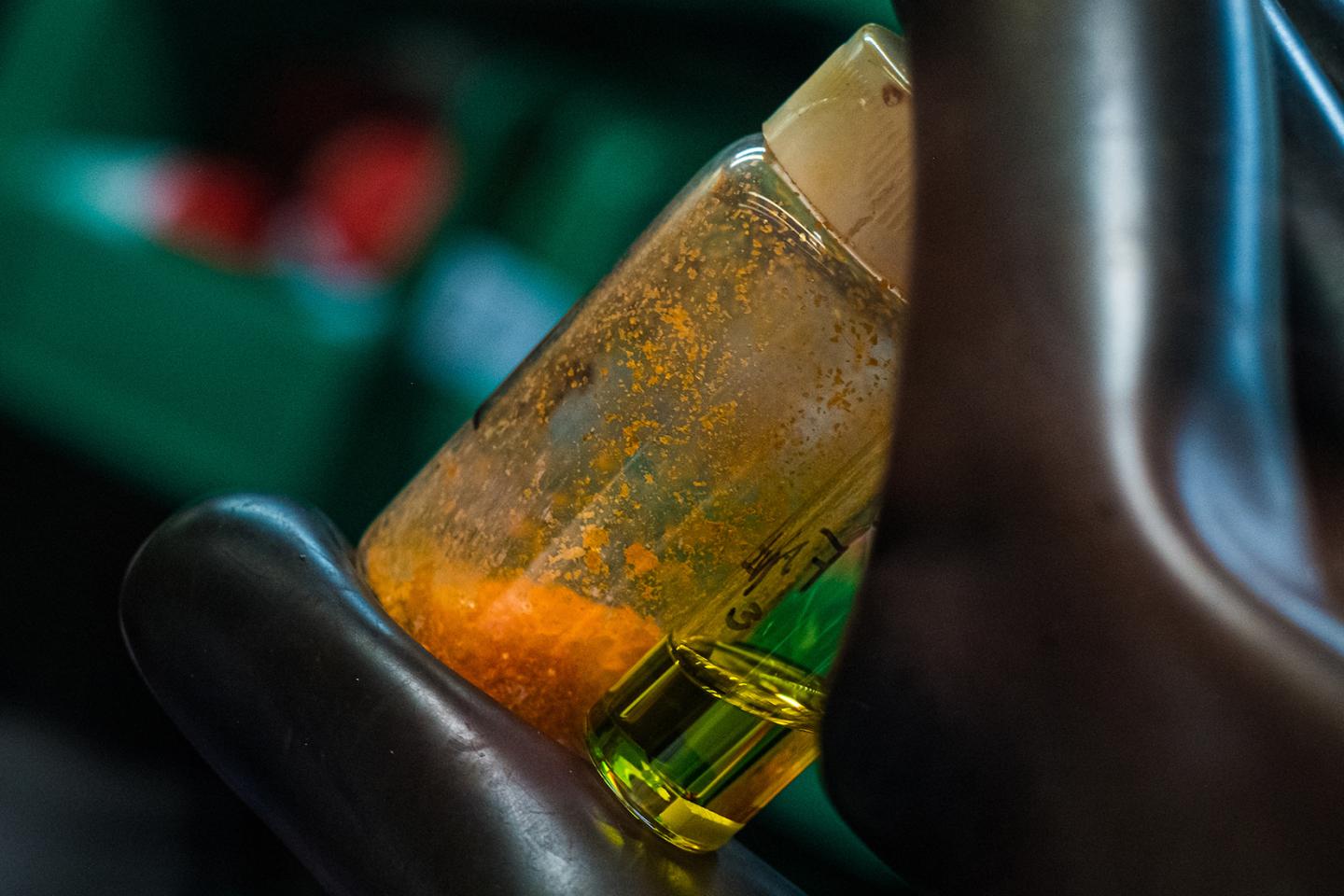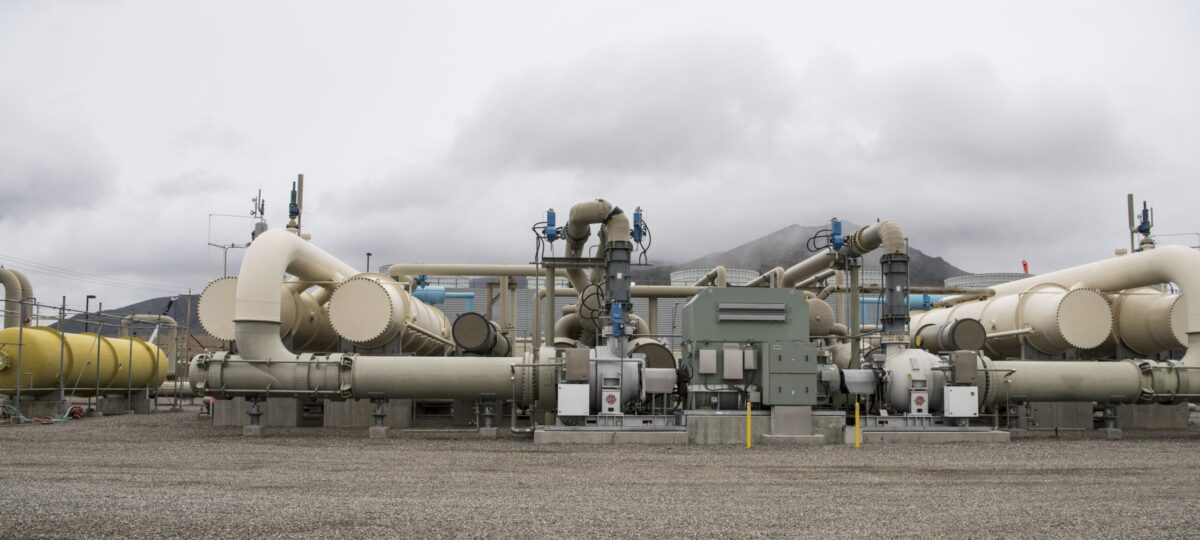
The inverted architecture of this perovskite solar cell, coupled with surface engineering, enabled researchers to improve efficiency and stability.
Photo from NREL
Researchers at the U.S. Department of Energy’s (DOE’s) National Renewable Energy Laboratory (NREL) made a technological breakthrough and constructed a perovskite solar cell with the dual benefits of being both highly efficient and highly stable.
The work was done in collaboration with scientists from the University of Toledo, the University of Colorado–Boulder, and the University of California–San Diego.
A unique architectural structure enabled the researchers to record a certified stabilized efficiency of 24% under 1-sun illumination, making it the highest reported of its kind. The highly efficient cell also retained 87% of its original efficiency after 2,400 hours of operation at 55 degrees Celsius.
The paper, “Surface Reaction for Efficient and Stable Inverted Perovskite Solar Cells,” appears in the journal Nature. The authors from NREL are Qi Jiang, Jinhui Tong, Ross Kerner, Sean Dunfield, Chuanxiao Xiao, Rebecca Scheidt, Darius Kuciauskas, Matthew Hautzinger, Robert Tirawat, Matthew Beard, Joseph Berry, Bryon Larson, and Kai Zhu.
Perovskite, which refers to a crystalline structure, has emerged in the last decade as an impressive means to efficiently capture sunlight and convert it to electricity. Research into perovskite solar cells has been focused to a large degree on how to increase their stability.
“Some people can demonstrate perovskites with high stability, but efficiency is lower,” said Zhu, a senior scientist in the Chemistry and Nanoscience Center at NREL. “You ought to have high efficiency and high stability simultaneously. That’s challenging.”
The researchers used an inverted architecture, rather than the “normal” architecture that has to date yielded the highest efficiencies. The difference between the two types is defined by how the layers are deposited on the glass substrate. The inverted perovskite architecture is known for its high stability and integration into tandem solar cells. The NREL-led team also added a new molecule, 3-(Aminomethyl) pyridine (3-APy), to the surface of the perovskite. The molecule reacted to the formamidinium within the perovskite to create an electric field on the surface of the perovskite layer.
“That suddenly gave us a huge boost of not only efficiency but also stability,” Zhu said.
The scientists reported the 3-APy reactive surface engineering can improve the efficiency of an inverted cell from less than 23% to greater than 25%. They also noted the reactive surface engineering stands out as an effective approach to significantly enhance the performance of inverted cells “to new state-of-the-art levels of efficiency and operational reliability.”
Original Article: NREL-Led Breakthrough Pushes Perovskite Cell to Greater Stability, Efficiency
More from: National Renewable Energy Laboratory | University of Toledo | University of Colorado Boulder | University of California San Diego
The Latest Updates from Bing News
Go deeper with Bing News on:
Perovskite solar cell
- Low-energy process for high-performance solar cells
Solar energy offers one solution, with scientists devising ever more efficient materials for capturing sunlight. Perovskite solar cells have emerged as a promising alternative to conventional, silicon ...
- UCSB pioneers a low-energy process for high-performance solar cells
Researchers at UC Santa Barbara developed a way to make perovskite films at room temperature. This material has emerged as a promising alternative to conventional, silicon solar cells.
- NREL interactive chart of solar cell efficiency now including ‘hybrid tandems’
The new cell category includes perovskite/silicon, perovskite/CIGS, III-V/silicon and perovskite/organic tandem PV devices. It will list the absolute record efficiency for all-perovskite, two-terminal ...
- Improving perovskite solar cell performance with conductive adhesive ink
Conceived by researchers from Iran, the new conductive adhesive ink is made of polymethyl methacrylate (PMMA) and is used as an interlayer between the cell's hole transport layer and carbon foil. It ...
- IIT Roorkee’s Perovskite Start-Up Wins IOCL Start-Up Challenge Grant for Advancing Solar Window Technology
A Collaborative Journey of Innovation at IIT Roorkee Revolutionizing Solar Energy with Innovative Window Technology Transforming Buildings into Powerhouses: The Rise of Solar Windows Pioneering the ...
Go deeper with Bing News on:
Stable and efficient perovskite solar cell
- KIT researchers develop18.2%-efficient perovskite solar cell via scalable inkjet process
Researchers at Karlsruhe Institute of Technology (KIT) have developed a scalable two-step evaporation and inkjet process for perovskite thin-film solar cells. The new technique ... achieved champion ...
- NREL interactive chart of solar cell efficiency now including ‘hybrid tandems’
The new cell category includes perovskite/silicon, perovskite/CIGS, III-V/silicon and perovskite/organic tandem PV devices. It will list the absolute record efficiency for all-perovskite, two-terminal ...
- Improving perovskite solar cell performance with conductive adhesive ink
Conceived by researchers from Iran, the new conductive adhesive ink is made of polymethyl methacrylate (PMMA) and is used as an interlayer between the cell's hole transport layer and carbon foil. It ...
- Solar Energy News
Apr. 8, 2024 — Researchers have fabricated a new four-terminal organic solar cell with a tandem configuration with a 16.94% power conversion efficiency (PCE). The new device is composed by a ...
- Researchers crack code for more efficient perovskite solar cells
Researchers developed a new strategy to achieve record efficiency (25.82%) and stability in perovskite/organic tandem solar cells.










